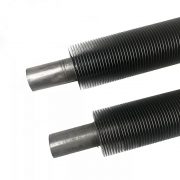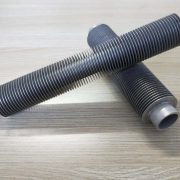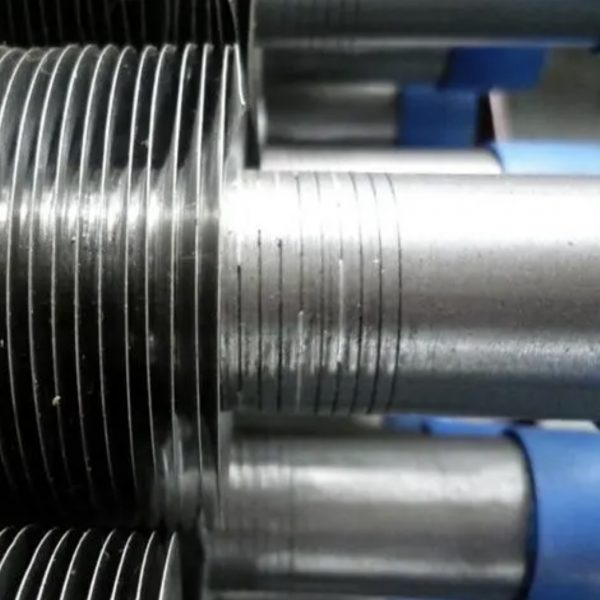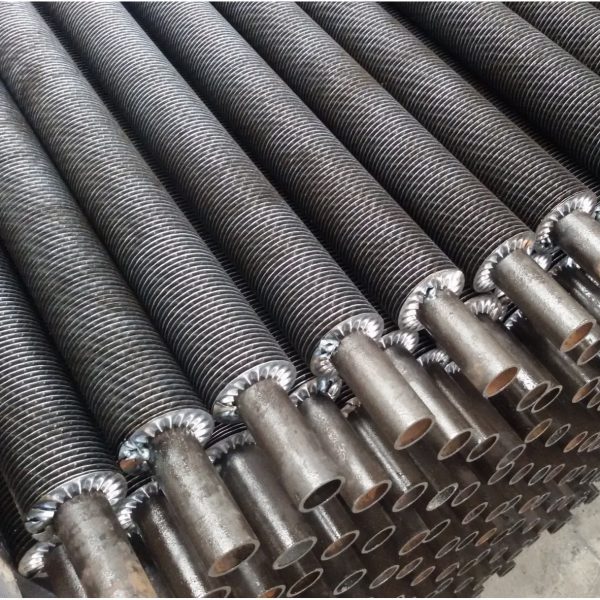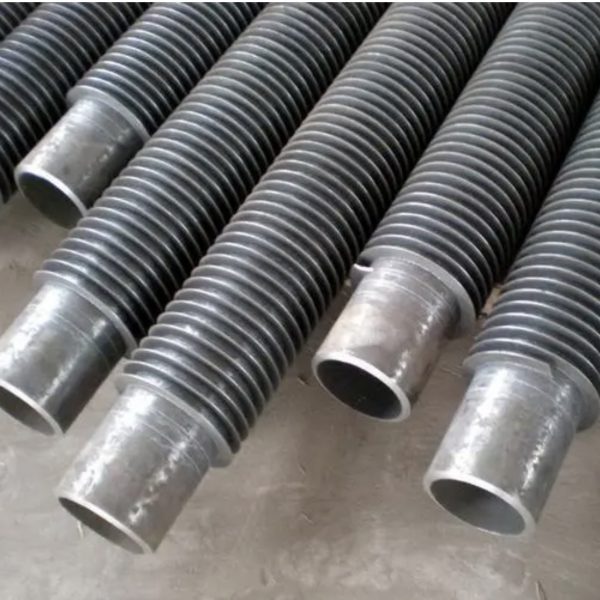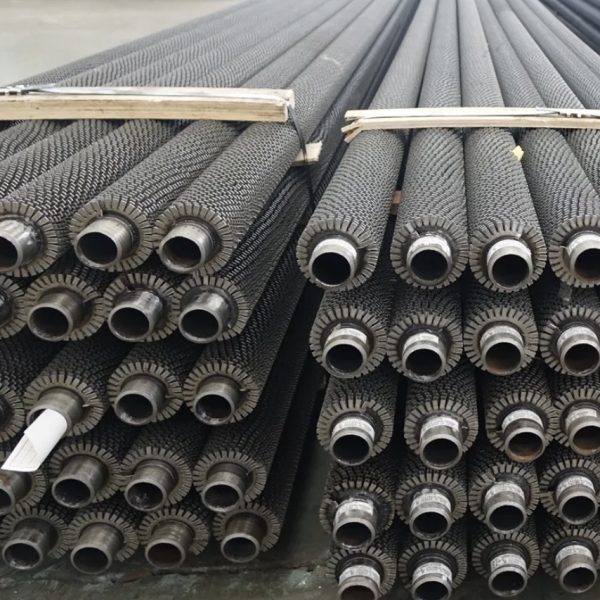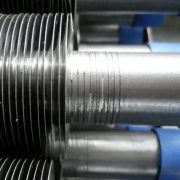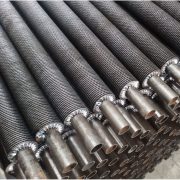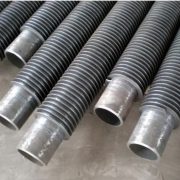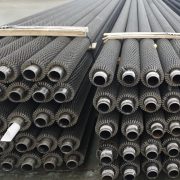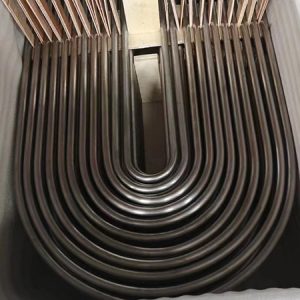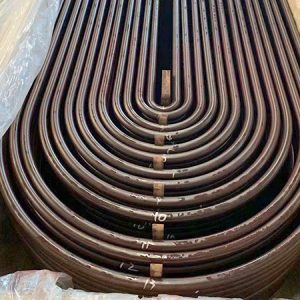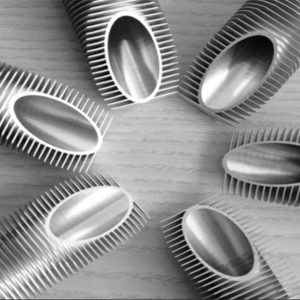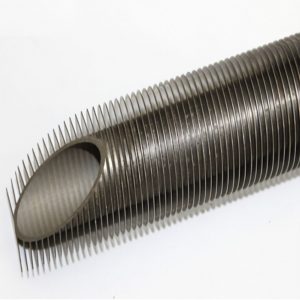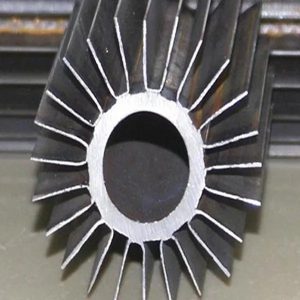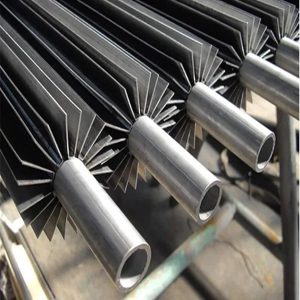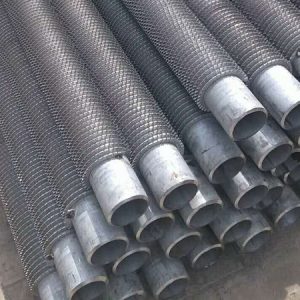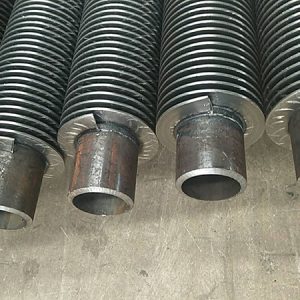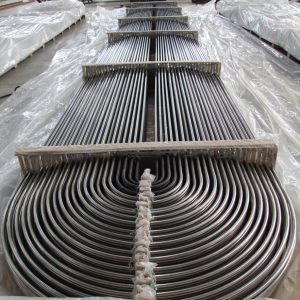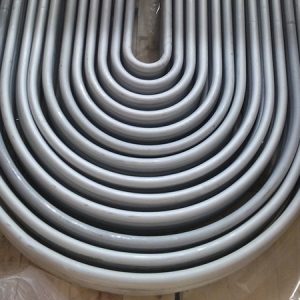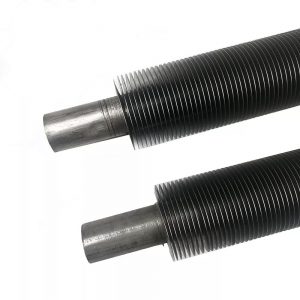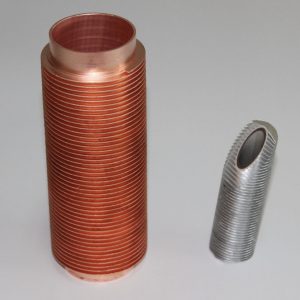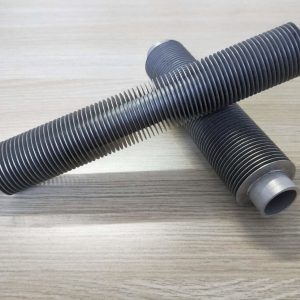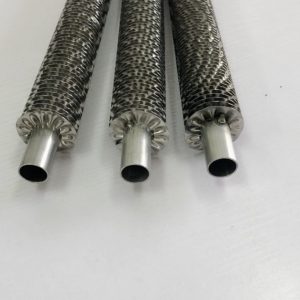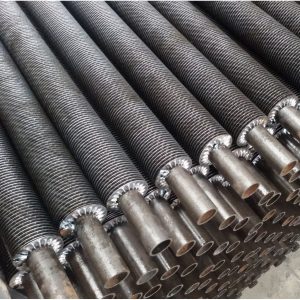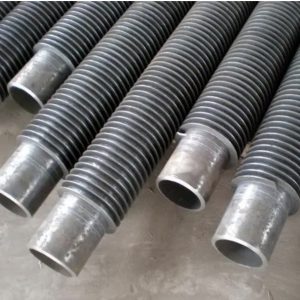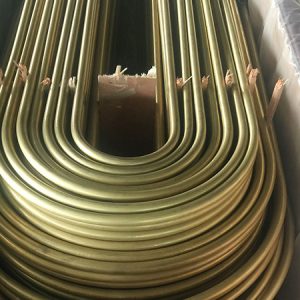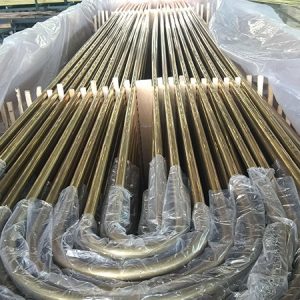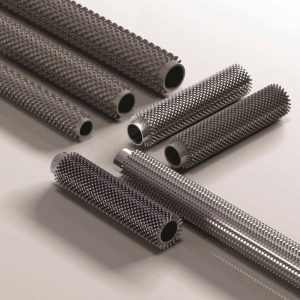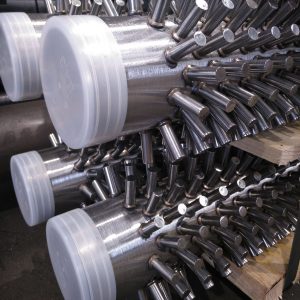Tubo de aleta láser
Soldadura láser de tubo con aletas es un nuevo, Material de intercambio de calor eficiente y resistente al desgaste en la industria de la soldadura de tubos de aleta. Es un elemento de intercambio de calor de alta eficiencia y ahorro de energía con alta eficiencia de intercambio de calor, Gran área de disipación de calor, larga vida útil y adaptación a la temperatura Dispone de una amplia gama, Alta presión, y cumple con los estándares nacionales de emisiones de conservación de energía y protección ambiental. Es ampliamente utilizado en la recuperación de calor residual, Industria petroquímica, Calderas de centrales eléctricas, Economizadores, Turismos, Calefacción de edificios industriales y civiles, Sistemas de refrigeración y otras industrias.
El tubo de aleta de soldadura láser es una máquina de soldadura láser de tubo de aleta que integra tecnología láser, Moldes de herrajes, y control numérico control automático. Es fácil de operar y flexible y conveniente de fabricar. Superación de una serie de problemas en el proceso de soldadura de tubos aleteados por láser, como fractura, Velocidad lenta, Formación deficiente, y arrugas. Datang ahora domina con éxito la soldadura de tubos con aletas, como la soldadura por láser, los tubos con aletas y los intercambiadores de calor. La producción y coordinación de todos los parámetros y accesorios automáticos.
- Descripción
- The advantages of finned tubes
- Product detail
- Indagación
Laser welded finned tube is a commodity with excellent technology, which has irreplaceable advantages.
1. The thickness of the base tube can be 0.8-1.5mm, and the thickness of the plate-fin type can be 0.3-1mm. The relative processing technology greatly saves the material cost.
2. The penetration rate is large, which can avoid the corrosion of voids, increase the service life, and reduce the heat transfer coefficient.
3. Improve the limit of raw materials, and can use different raw materials for processing.
4. It is convenient for secondary processing, and the fan coil and elbow can be carried out immediately.
5. The heat-affected zone of electric welding is small, and the transformation of metallographic analysis is small, which makes it very possible to make small tubes processed by finned tubes.
Datang has 4 laser welding finned tube machines with a daily productivity of 2000 Metros.
Laser welding finned tube adopts laser welding process, which can weld light pipes and fins with thinner wall thickness, as well as denser fin pitches. Thinner light pipes and dense fins can improve heat exchange efficiency. Good penetration rate and not easy to be pulled off are the foundation of its good service life.
Laser welding finned tubes can realise welding between different metals, which can achieve good heat exchange efficiency for customers under different working conditions, and thinner wall thickness is also one of the ways to save costs.
Changzhou Grand has been committed to the development and research of monolithic laser welded finned tubes and single-layer and double-layer spiral coils. Now it has been applied in various fields such as boilers, chemicals, wall-hung boilers, buques, waste heat power generation, and home improvement. The surface is most used as a heating surface in the boiler industry. It is environmentally friendly and energy-saving. Laser welding finned tube is currently the most advanced product with irreplaceable advantages. The advantages of heat exchange waste heat in boilers and chemical industries have been fully utilized.
Our laser welding finned tubes have stable process and good price. It has provided support for the product innovation of various energy enterprises and provided opportunities for the development of enterprises. Laser-welded finned tubes have higher heat transfer performance and lower material costs than high-frequency welded finned tubes, and will become a market development trend.
The advantages of finned tubes
Transferring heat from a hot fluid into a colder fluid through a tube wall is the reason many of us use finned tubes. But you may ask, what is the major advantage of using a finned tube? Why can’t you just use a regular tube to make this transfer? Well you can but the rate will be much slower.
By not using a finned tube the outside surface area is not significantly greater than the inside surface area. Because of that, the fluid with the lowest heat transfer coefficient will dictate the overall heat transfer rate. When the heat transfer coefficient of the fluid inside the tube is several times larger than that of the fluid outside the tube the overall heat transfer rate can be greatly improved by increasing the outside surface area of the tube.
Finned tubes increase outside the surface area. By having a finned tube in place, it increases the overall heat transfer rate. This then decreases the total number of tubes required for a given application which then also reduces overall equipment size and can in the long-run decrease the cost of the project. In many application cases, one finned tube replaces six or more bare tubes at less than 1/3 the cost and 1/4 the volume.
For applications that involve the transfer of heat from a hot fluid to a colder fluid through a tube wall, fin tubes are used. Usually, for an air heat exchanger, where one of the fluids is air or some other gas, the air side heat transfer coefficient will be much lower, so additional heat transfer surface area or a fin tube exchanger is very useful. The overall pattern flow of a finned tube exchanger is often crossflow, sin embargo, it can also be parallel flow or counterflow.
Fins are used to increase the effective surface area of heat exchanger tubing. Furthermore, finned tubes are used when the heat transfer coefficient on the outside of the tubes is appreciably lower than that on the inside. In other words, heat transferred from liquid to gas, vapor to gas, such as steam to air heat exchanger, and thermic fluid to air heat exchanger.
The rate at which such heat transfer can occur depends on three factors – [1] the temperature difference between the two fluids; [2] the heat transfer coefficient between each of the fluids and the tube wall; y [3] the surface area to which each fluid is exposed.
Finned tubes are used because they help:
Increase Heat Transfer Rate:
A finned tube exchanger typically has tubes with fins attached to the outside. Usually, there will be some liquid flowing through the inside of the tubes and air or some other gas flowing outside the tubes, where the additional heat transfer surface area due to the finned tube increases the heat transfer rate. In a crossflow fin tube exchanger, the fins will typically be radial fins and they’ll either be circular or square in shape.
Improve Heat Transfer Coefficient:
By not using a finned tube, the outside surface area is not significantly greater than the inside surface area. Debido a esto, the fluid with the lowest heat transfer coefficient will dictate the overall heat transfer rate. When the heat transfer coefficient of the fluid inside the tube is several times larger than that of the fluid outside the tube, the overall heat transfer rate can be greatly improved by increasing the outside surface area of the tube.
Increase Outside Surface Area:
By having a finned tube in place, it increases the overall heat transfer rate. Finned tubes increase the outside surface area. This decreases the total number of tubes required for a given application which then also reduces overall equipment size and can in the long-run decrease the cost of the project.
Finned tube heat exchangers are used in a variety of applications, and more so as industrial heat exchangers. An air heat exchanger like the evaporator coil in an air conditioning unit is typically a fin tube exchanger. Another common fin tube air heat exchanger is the car radiator. The purpose of the car radiator is to cool the hot water in the tubes with the air passing through the crossflow. On the contrary, the air conditioner evaporator coil has the purpose of cooling the air passing through it. The finned tubes that are manufactured at Kainon Boilers, use high grade carbon steel, Acero inoxidable, copper, brass, and aluminum. Our finned tube exchangers are designed to meet the specific duty condition, temperature and pressure of the fluids
Referencia del tubo de aleta
Las aletas de acero al carbono están disponibles en carbono, Acero inoxidable, o tubo de cobre. Llame para obtener un tamaño específico si no está en la lista

| Tipo | Descripción | Tubo base Diámetro exterior. (milímetro) |
Especificación de aletas (milímetro) | ||
|---|---|---|---|---|---|
| Paso de las aletas | Altura de la aleta | Aleta gruesa | |||
| Incrustado | Tueb de aleta tipo G | 16-63 | 2.1-5 | <17 | ~0.4 |
| Extruido | Metal combinado de un solo metal | 8-51 | 1.6-10 | <17 | 0.2-0.4 |
| Tubo de aleta baja Tubo de aleta tipo T | 10-38 | 0.6-2 | <1.6 | ~0.3 | |
| Tubo de bambú tubo corrugado | 16-51 | 8-30 | <2.5 | / | |
| Herida | Tubo de aleta tipo L/KL/LL | 16-63 | 2.1-5 | <17 | ~0.4 |
| Cuerda | Tubo de aleta de cuerda | 25-38 | 2.1-3.5 | <20 | 0.2-0.5 |
| Tipo U | Tubo tipo U | 16-38 | / | / | / |
| Soldadura | Tubo de aleta de soldadura HF | 16-219 | 3-25 | 5-30 | 0.8-3 |
| Tubo de aleta tipo H/HH | 25-63 | 8-30 | <200 | 1.5-3.5 | |
| Tubo de aleta con tachuelas | 25-219 | 8-30 | 5-35 | φ5-20 | |
Según las necesidades del usuario, Podemos producir todo tipo de tubos con aletas de bobinado de tiras de acero y tubos con aletas compuestos de aluminio y acero.
Materiales
Las aletas de acero al carbono están disponibles en carbono, Acero inoxidable, o tubo de cobre. Llame para obtener un tamaño específico si no está en la lista

Le ofrecemos una amplia cartera de materiales y podemos ampliar nuestra oferta en cualquier momento para satisfacer sus necesidades específicas en cuanto a conductividad térmica, Propiedades mecánicas, o resistencia a la corrosión.
- Tubo base: Acero al carbono, Acero inoxidable, Cobre, Cupro Níquel, Aluminio, Acero aleado
- Aleta: Acero al carbono, Acero inoxidable, Cobre, Aluminio
- Anillos: Acero al carbono, Aluminio, Galvanizado en caliente

